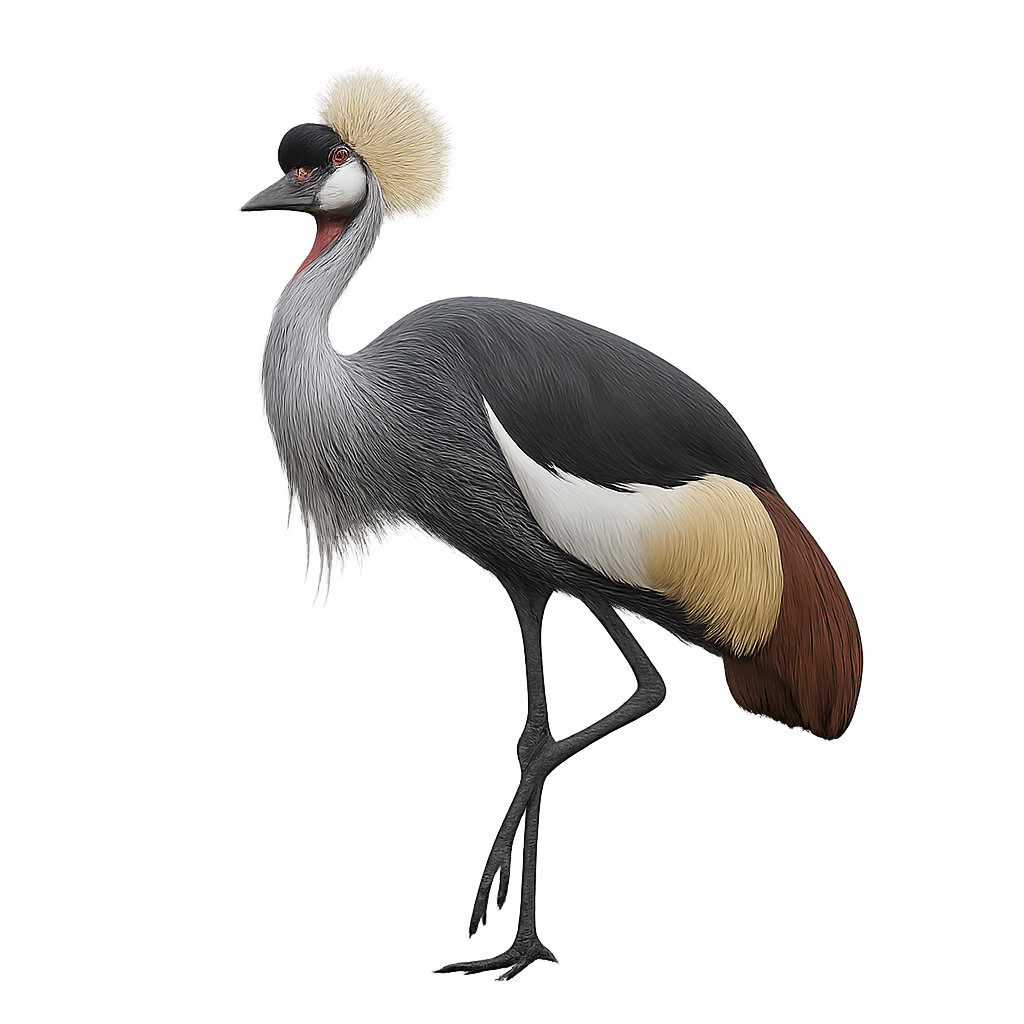Your wildlife photography guide.
Explore the crowned crane in detail, study its behavior, prepare your shots.
Where to observe and photograph the crowned crane in the wild
Learn where and when to spot the crowned crane in the wild, how to identify the species based on distinctive features, and what natural environments it inhabits. The WildlifePhotographer app offers tailored photography tips that reflect the crowned crane’s behavior, helping you capture better wildlife images. Explore the full species profile for key information including description, habitat, active periods, and approach techniques.
Crowned crane
Scientific name: Balearica regulorum

IUCN Status: Least Concern
Family: GRUIDAE
Group: Birds
Sensitivity to human approach: Shy
Minimum approach distance: 30 m
Courtship display: December to April
Incubation: 28-31 jours
Hatchings: December to May
Habitat:
Wetlands, marshes, savannas, and grasslands of Africa, especially in sub-Saharan regions and coastal areas of Eastern and Southern Africa
Activity period :
Primarily active during the day, with peak activity in the morning and late afternoon.
Identification and description:
The Crowned Crane is a large crane species, easily recognizable by its majestic golden plume crown on its head. It stands about 1 meter tall, with a wingspan of 1.8 to 2.2 meters, and weighs between 3 and 5 kg. Its plumage is mainly light gray, with white feathers on its belly and wings, and a head adorned with a golden crest, giving it a royal appearance. This species is primarily found in East Africa, notably in Uganda, Kenya, and Tanzania, where it inhabits wetlands, marshes, and grasslands. The Crowned Crane primarily feeds on seeds, roots, insects, and occasionally small vertebrates. It is a social bird, living in groups and often performing spectacular courtship displays, during which it engages in dances and calls. Although the Crowned Crane is considered "vulnerable," conservation efforts have been implemented to protect the species, as it faces threats from habitat loss, hunting, and human disturbance.
Recommended lens:
300 mm – adjust based on distance, desired framing (portrait or habitat), and approach conditions.
Photography tips:
Use a telephoto lens to photograph the crowned crane, especially when it’s moving or feeding in meadows or marshes.
Soft morning or evening light is ideal to capture its vivid colors and graceful behavior.
Be discreet and respect its space, especially during the breeding season, to avoid disturbing its natural behavior.
IUCN status: Near Threatened. Respect its environment and minimize disturbance, especially during the breeding season.
The WildlifePhotographer App is coming soon!
Be the first to explore the best nature spots, track rutting seasons, log your observations, and observe more wildlife.
Already 1 431 wildlife lovers subscribed worldwide

